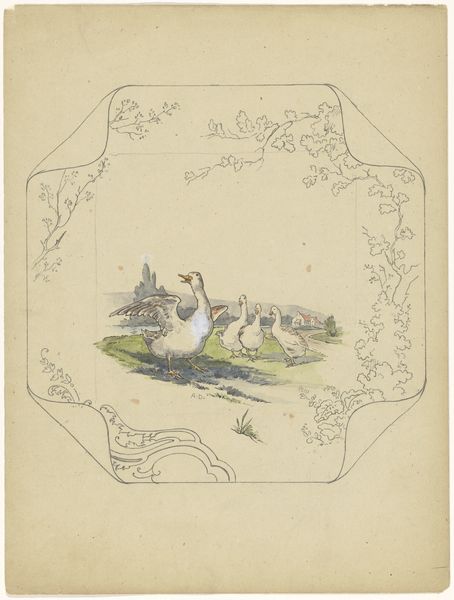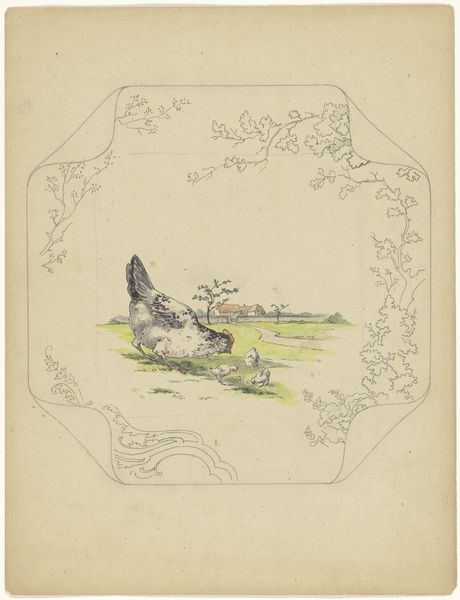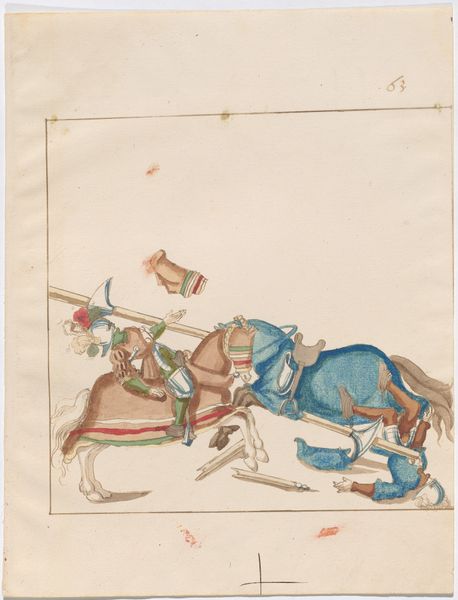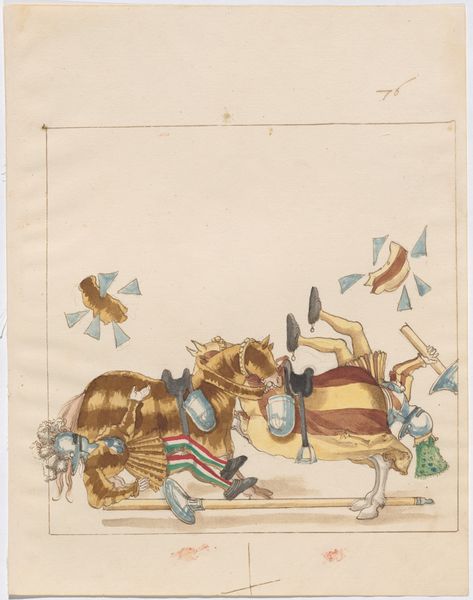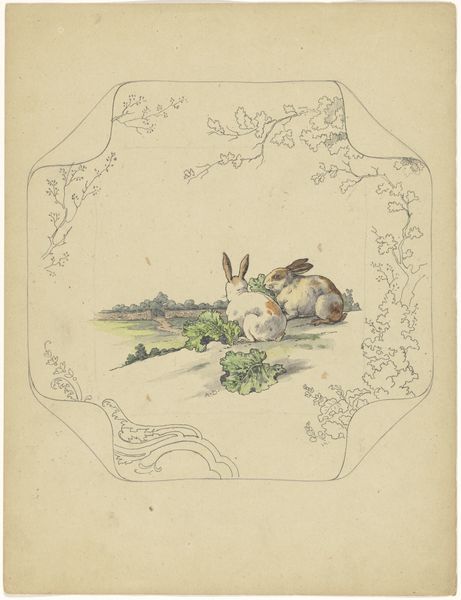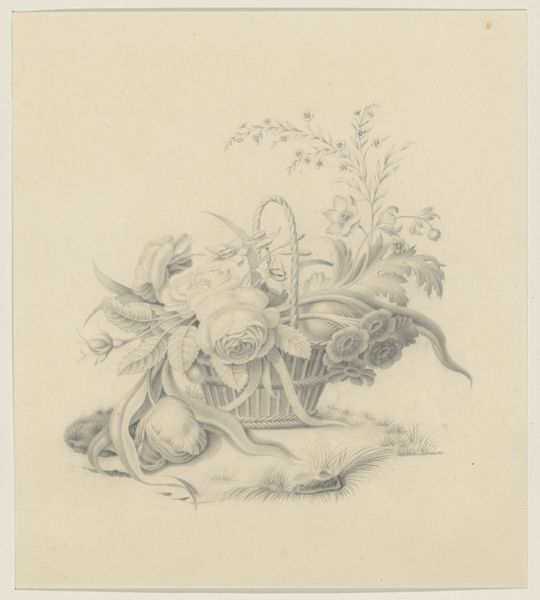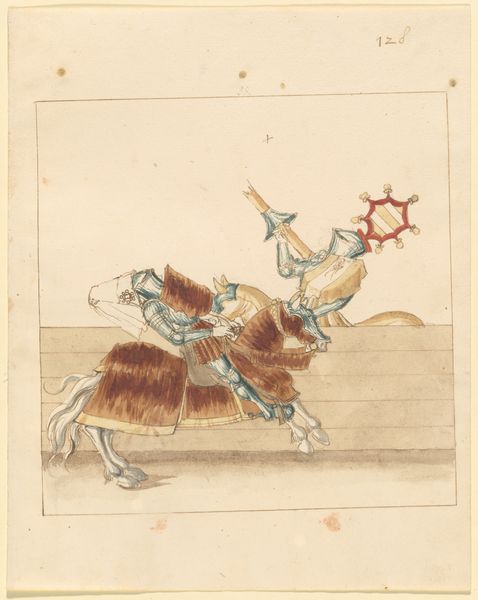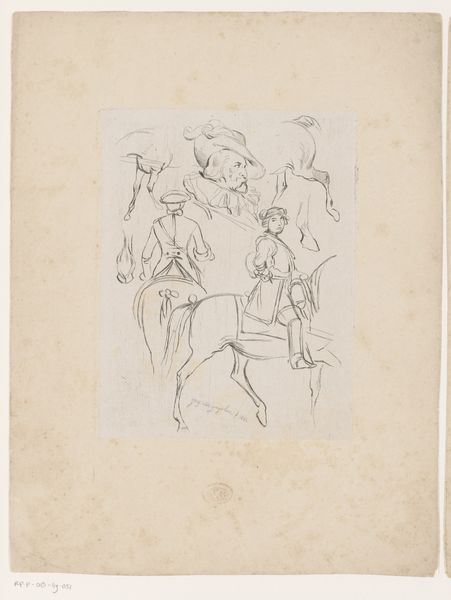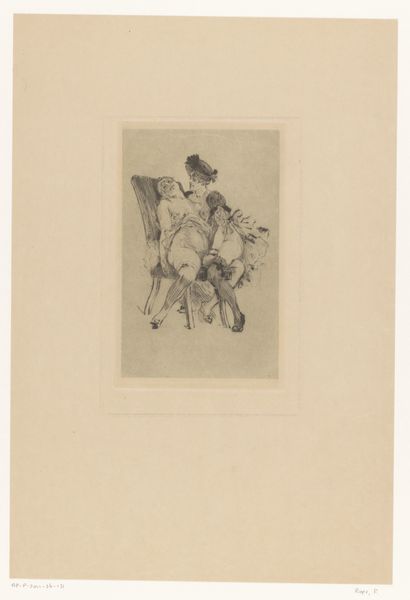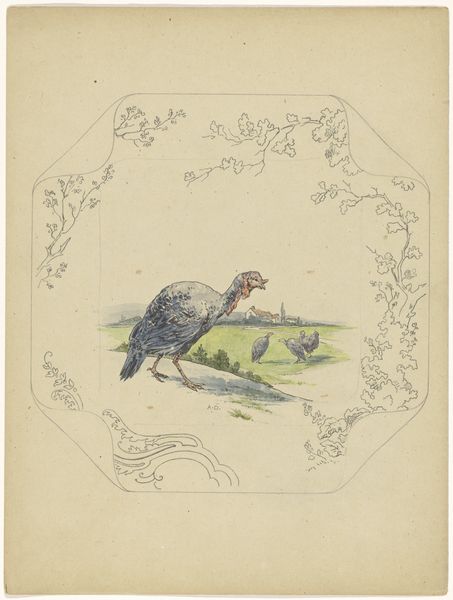
Ontwerp voor bord van het model ‘Square’ met een zogende geit c. 1875 - 1880
0:00
0:00
drawing, watercolor, ink, pencil
#
drawing
#
quirky illustration
#
light pencil work
#
blue ink drawing
#
quirky sketch
#
animal
#
landscape
#
personal sketchbook
#
watercolor
#
ink
#
ink drawing experimentation
#
pencil
#
sketchbook drawing
#
watercolour illustration
#
storyboard and sketchbook work
#
sketchbook art
Dimensions: height 336 mm, width 257 mm
Copyright: Rijks Museum: Open Domain
Curator: This is "Ontwerp voor bord van het model 'Square' met een zogende geit," or "Design for a plate of the 'Square' model with a suckling goat," by Albert-Louis Dammouse, dating from around 1875-1880. It's a study, rendered in pencil, ink, and watercolor. What do you think? Editor: It feels utterly charming, almost dreamlike. There's a gentle, slightly faded quality to the colours that suggests memory and pastoral calm. And I find that border motif strangely delightful... a touch incomplete and tentative. Curator: Well, consider Dammouse’s material practice. He was working at the intersection of fine art and industry. This design reveals a fascinating negotiation between artistic expression and the demands of mass production for the ceramics industry. The pencil under-drawing suggests preliminary, cost-effective sketches. Editor: I suppose I wasn't considering how this tender little vignette, featuring a mother goat and her kid, could be destined for plates… So much for idyllic peace, then—crashing down when you slice the cheese! Curator: Precisely! And note the composition; the central image with landscape elements exists independently of the drawn border which may represent the outer edge of the square model the artwork refers to in the title. Editor: You’re right, that separation creates such an unusual tension. And the different styles used for the edge design – branches at the top, an abstract flourish below – almost give it the air of a visual experiment. Dammouse is juggling ideas and visual styles on the same plane. Curator: That's an astute observation. The varying border elements demonstrate his awareness of popular decorative techniques, adapting pastoral scenes into the applied arts. Editor: Thinking about the everyday use of this design really brings the artistry down to earth, literally! One moment it’s a mountain landscape in the Swiss Alps, the next it's something to stack a sandwich on. Curator: Exactly. The piece shows us the realities facing artists in the 19th century, caught between a desire for artistic innovation and the needs of the industrial marketplace. Editor: I have to say, re-contextualizing its possible "ceramic-ness" has shifted my appreciation. It is, like that cheese you were speaking of, a complex layering. Curator: For me, viewing art through this lens allows one to consider and appreciate the material means of making, labor, and the role art plays in society. Editor: I love how this one sweet picture invites us into big, serious material concerns—while still keeping a tender heart, I think. It is interesting how the mundane and bucolic combine and collide, enriching one another!
Comments
No comments
Be the first to comment and join the conversation on the ultimate creative platform.
